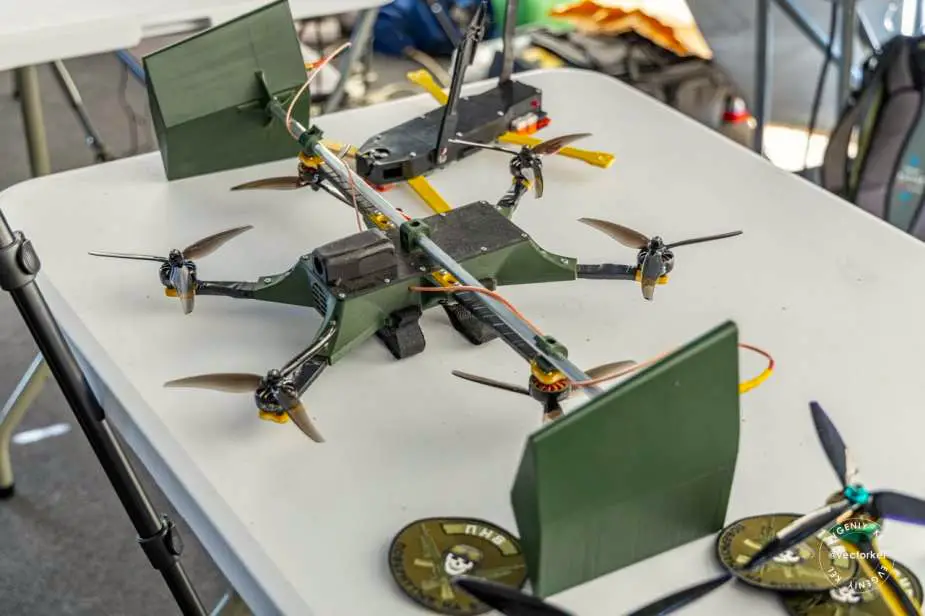Russian designers increase flight range and resistance to electronic warfare of FPV drones
In his blog post, blogger DanielR delved into the advancements in Russian attack drone technology, offering an analysis of a downed drone, as reported by Militarnyi. The featured drone in the images was identified as the Russian FPV drone "Upyr," equipped with a communication repeater station that significantly extends the flight range of strike drones.
Follow Army Recognition on Google News at this link

The Russian "Upyr" repeater drone at the Army-2023 defense exhibition held in August 2023 (Picture source: DanielR via Militarnyi)
This innovative drone operates by receiving communication signals from a control station and relaying them to another drone. On its return journey, it also receives and transmits images from its onboard video camera to the remote operator's control station. This approach necessitates the simultaneous involvement of multiple crews to maintain the "radio bridge" and requires the utilization of several frequencies. Nevertheless, it opens up a multitude of opportunities for striking at the enemy's rear positions.
The Russian "Ghost" is mass-produced by a private enterprise in Yekaterinburg and relies heavily on 3D printing for manufacturing components such as the plastic body, antennas, cameras, and other small parts. The drone features two prominent repeater antennas for signal reception and transmission. Additionally, it includes a video camera and a GPS module equipped with an iFlight compass (M8Q-5883 V2.0) to facilitate navigation and orientation in space.
Notably, the drone incorporates a SAW (Surface Acoustic Wave) filter produced by Tai-Saw Technology, specifically the TA1090EC model. This component is employed to block the reception of radio frequencies outside the 1.075 to 1.095 GHz range. This use of such filters serves to safeguard communication from the potential interference posed by electronic warfare (EW) systems that operate across a wide spectrum of radio frequencies. Jamming such drones would require operators of EW stations to generate interference at precisely the correct frequency, which is a challenging task.
Moreover, the development of strike drones is progressing in the direction of integrating artificial intelligence and automatic target acquisition systems. Additionally, the utilization of more advanced drones equipped with infrared and thermal imaging cameras, enabling nighttime flights, is becoming increasingly prevalent and adaptable on the battlefield.
Drone technology is also evolving in terms of size. Towards the end of the previous year, the Ukrainian military began deploying heavy drones named "Mammoth" against Russian forces. These drones can carry warheads weighing up to 4 kg and possess a flight range of up to 30 km.

Russian drone-repeater "Ghost" downed in 2023 (Picture source: DanielR via Militarnyi)

SAW filter produced by Tai-Saw Technology (Picture source: DanielR via Militarnyi)
Defense News January 2024
- Hits: 3719
















